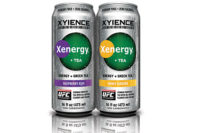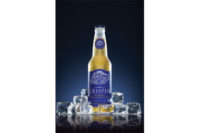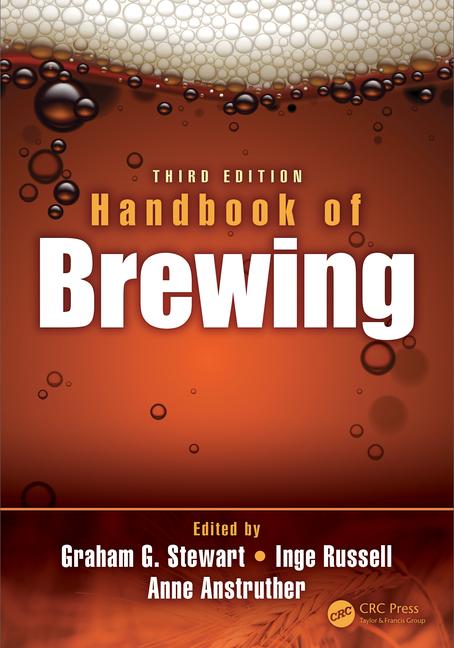For beverages, colors can play a crucial role when it comes to shelf appeal. They can help grab a consumer’s attention as well as correspond to the flavor and branding of a beverage. In addition, as beverage-makers seek more natural ingredients to be able to provide clean label statements, the search for colors that can deliver on all of those requests has helped spark innovation among ingredient suppliers.
“All of our research indicates people are really starting to care about what they put into their body and especially in diet drinks,” says Stefan Hake, chief executive officer of GNT, Tarrytown, N.Y. “People don’t just count calories, they’re aware of what they’re putting into their body, and there’s some great diet drinks like water drinks that are zero calories and they are also natural and don’t contain any artificial colors.
“The market is being driven by consumers and also by a lot of retail outlets that position natural products over products that are artificially colored, and we see that the trend is moving more and more in that direction,” he continues.
That driving force for natural offerings has had some impact on the synthetic colors market. “The artificial color market globally has been shrinking, though this has not been reducing the cost of synthetic colors. Perhaps this is due to the economies of scale,” says Jeff Greaves, president of Food Ingredient Solutions, Teterboro, N.J. “As demand for synthetic colors is decreasing, many synthetic color companies are seeking to reinvent themselves as natural color companies.”
Even though some ingredient suppliers say that synthetic color demands do not seem to be increasing, a market still remains. “I think there is still demand for artificial colors, particularly … [for] existing products,” says Campbell Barnum, vice president of branding and market development with D.D. Williamson, Louisville, Ky. “But I do think that natural color has been growing 5 to 10 percent a year in the past few years in North America and synthetic color demand has been pretty flat, just from a total dollar perspective. The food and beverage industry has been growing, but artificial color demand has been flat, so natural colors have enjoyed the growth in the beverage industry.”
As naturally derived colors continue to become more popular with beverage-makers, ingredient suppliers have encountered some issues with the term “natural.”
“One of the big problems is the definition of ‘natural,’” says David Tuescher, technical director with Sethness, Lincolnwood, Ill., a caramel color supplier. “There is no government definition of ‘natural’ and if you look at the long term, in the past, all caramel colors were considered natural. Nowadays, some companies consider all caramel colors natural, some companies consider only the Class 1s, and most companies prefer Class 1 for natural over the other products.”
In addition, ingredient suppliers suggest that regulations in Europe have impacted the natural and synthetic markets domestically.
“In Europe, the main drive has been the change in the regulations last year requiring that products containing azo dyes, red 40, yellow 5, yellow 6, etc., the main category of synthetic colors, be labeled to the effect: ‘May cause attention or activity disorder in children,’” Greaves says. “This has had an indirect effect on the U.S. market as multinational [companies] seek to eliminate synthetic colors globally as a result.”
The regulations with synthetic dyes in Europe are an example of the replacement aspect of formulation, says Jason Armao, director of application and innovation with D.D. Williamson. Although D.D. Williamson says it is seeing the switch to naturally derived colors, in the United States those requests are more common for initial products and not reformulations.
“A lot of those [requests] are coming from product line extensions or creating new products,” Barnum says. “In some cases, it is reformulating products. A lot of it is, ‘I’m used to dealing with synthetic color, but for this product I’d like to try the natural alternatives.’ Sometimes we get the other, but it’s a lot more challenging to reformulate and match exact characteristics.”
Making the switch
Ingredient suppliers that deal in both natural and synthetic colors have seen more of their customers’ requests leaning toward the natural side. By selecting naturally derived colors, some challenges and limitations can arise.
Sensient Colors LLC, St. Louis, says its customers want natural colors that are as stable and consistent in shade as the synthetic versions.
“We continue to improve the vibrancy and stability of natural colors by developing more stable botanical sources, identifying new sources or even developing new plant hybrids,” says Mark Goldschmidt, director of global quality and product safety with Sensient. “Selective plant breeding programs and new hybrid creations are important factors in producing more stable botanical sources.”
He adds that a majority of Sensient’s natural colors are free of genetically modified organisms (GMOs), preservatives and allergens. “We know that people want cleaner, more wholesome ingredients in their product, and we also know that natural colors possess compounds that promote health and wellness,” Goldschmidt says. “We offer a complete product portfolio of natural colors like carotenoids and anthocyanins, which capture many of the healthy attributes inherent in colors derived from fruits and vegetables, such as antioxidants, vitamins and polyphenols.”
One area that has sparked recent innovations is the development of a natural blue color.
“Regarding natural colors, the biggest gap is finding a natural blue color that can replicate the rich shade of certified colors,” says Emina Goodman, technical support manager for the beverage and dairy group with Sensient United States Food Colors. “Since blue is a primary color, which is also used to develop green and purple shades, this gap affects the development of vibrant green and purple shades.”
Goodman adds that the company previewed its development of a natural blue color at the Institute of Food Technologists Expo this year and is testing the natural blue shade with select customers.
Erlanger, Ky.-based Wild Flavors also made advancements in the natural sector with its development of the Acid-Stable Blue color. Wild Flavors’ Acid-Stable Blue offering is naturally derived from fruit and is ideal for both the food and beverage industries.
“The Acid-Stable Blue is our most recent innovation and with that it allows us to create different shades such as green or purple and even black or brown. This really has been quite a successful innovation for us, and we continue to expand upon it,” says Chad Ford, technical product manager with Wild Flavors.
Additional features for the Acid-Stable Blue are that it is GMO-free, kosher, water-soluble, heat-, light- and acid-stable, and offers a clean taste and smell, the company says.
Stabilized offerings
In addition to developing naturally derived colors that mimic the vibrancy and the hue of synthetic colors, ingredient suppliers also are tasked with ensuring stability in natural offerings.
“The issues for both natural and artificial colors in beverages are light stability, heat stability and pH stability,” says Food Ingredient Solutions’ Greaves. “In some cases, natural colors actually offer a performance advantage over synthetic colors. For example, acid-proof cochineal has far superior light stability to the synthetic red color with a similar shade, red 3. Also, purple sweet potato color offers superior stability to red 40 in systems with high amounts of vitamin C.”
Food Ingredient Solutions has worked to develop a range of colors that meet stability needs of beverage-makers with its FISclear line of natural colors and micro-emulsions. “The fruit and vegetable juice colors under this banner offer a complete range of stable, economic fruit and vegetable juice color blends for customers seeking an out-of-the-box shade solution,” Greaves says. “The micro-emulsions offer a range of clear, stable yellow to red-orange shades.”
The company also recently introduced a micronized curcumin extract. It offers a stable shade that is similar to yellow 5 with some opacity, he says. “Micronizing greatly improves the stability of the curcumin,” Greaves adds. “It also reduces the cost in use, which is important as curcumin prices are up several hundred percent.”
Although working with naturally derived colors can present some technical challenges, suppliers recognize how far the market and technology has come.
“I think the technology involved with producing the natural colors, for example emulsions, has come a long way in the last several years,” D.D. Williamson’s Armao says. “There’s new technology being employed with making emulsion colors and there’s improved efficiencies with extraction techniques.”
Armao adds that yields related to crops and other agricultural issues can result in more consistent products. That, coupled with the technology used to produce colors, has helped improve the functionality and performance of different colors.
“A perfect example in beverages would be emulsion colors. You can take beta carotene, which is oil soluble, and make it water soluble using emulsion technology,” he says. “Even going beyond that, emulsions can be made clear or cloudy. So if you’re putting a yellow color into a beverage, instead of it looking cloudy like juice, now you can have something more clear, which when you think about the enhanced water category, it kind of fits; you want the water to be colored, yet still be clear and not have a cloudy appearance.”
The advancement of these technologies has helped more companies deliver products to their customers. “We’ve developed some clear and cloudy color emulsions that allow for broader shades of colors in various beverages due to the enhanced stability of those products, making them more suitable across a wide range of product categories,” Wild’s Ford says.
Another area that can affect the long-term stability of naturally derived colors is the absence of preservatives, and ingredient supplier companies continue to seek ways to address those concerns.
“Eliminating preservatives from natural color systems significantly reduces shelf life,” says Steve Morris, commercial director with Sensient. “With our new aseptic packaging system, we are able to offer customers preservative-free natural colors that have a shelf life comparable to a preserved color.”
In addition to stability, technology also has helped companies make improvements to taste. For example, Sethness has seen advancements with its caramel color offerings.
“We’ve actually produced some Class 1 [caramel colors] that have a very, very mild taste,” says Sethness’ Tuescher. “Typically, Class 1s have a very strong [taste]; they’re commonly used in whiskey. … But a lot of products when you go from a Class 4 or a Class 3 to a Class 1, you increase the amount of caramel color required and the taste becomes more of a factor … We have some Class 1s that do very well in high salt concentrations and have some Class 1s that do very well in organic acids.”
D.D. Williamson also has seen a sudden surge in demand for its flavored Caramelized Sugar 830 and Caramelized Apple 810, which launched a couple of years ago. The natural flavors provide incidental coloring, Barnum says. The Caramelized Sugar offers a characteristic flavor of burnt sugar and is stable in phosphoric acid, citric acid, up to 60 percent alcohol and 15 percent salt applications, he adds.
The company’s Caramelized Apple flavor, which can be used in ciders and other apple drinks, enables the beverage to state “100 percent apple” on a product display panel. This is important for beverage companies, he says. The ingredient also can be labeled as “caramelized apple juice concentrate” or “natural flavor,” the company says.
On the horizon
With more and more beverage-makers exploring the use of natural colors combined with ingredient suppliers’ technical strides and formulation with more varieties of fruits and vegetables, the market for naturally derived colors looks poised to continue its growth.
GNT’s Hake notes the increase in color variety recently, “I think with the last five years, you see that if you go through the aisles throughout the world, you’ll see more and more [that] it’s not a niche market. It’s not where just some small players are picking out alternative [colors] for beverages, but you’ll also see some of the biggest beverage-makers around the world incorporating natural colors.”
Hake anticipates in the future to see more color varieties emerge with the help of research to find more varieties of fruits and vegetables that can provide new color hues, shades and improve stability.
Food Ingredient Solutions’ Greaves anticipates the main innovations will come from improved fruit and vegetable juice colors and improved emulsions, but he also hopes to see more options emerge.
“Another pending breakthrough, which we hope to finally complete this year, is our petition for copper chlorophyllin — filed in 2006 — a natural green color,” he says. “This will allow us to not only offer greens, but modify a wide range of other natural color blends.” BI








